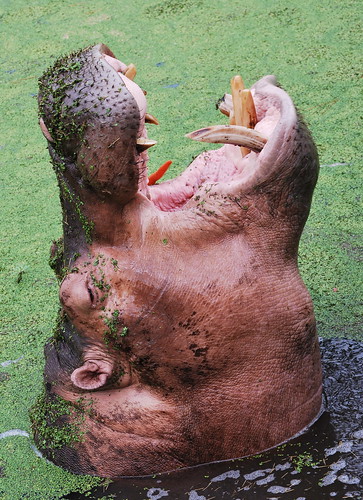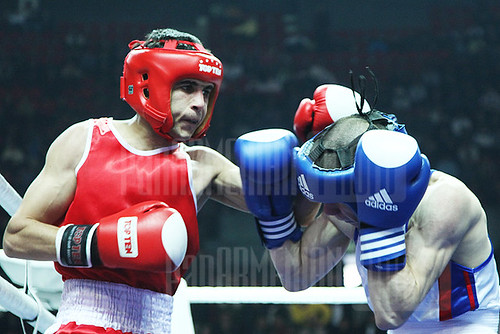This round-up of recent decisions of the US Board of Patent Appeals and Interferences (BPAI) focuses on recent cases involving issues of patentable subject matter.
Compilation or arrangement of data
In
Ex Parte Baumgartner et al, No. 2009-015143 (BPAI May 3, 2012) we saw IBM Corporation appear before the Board of Patent Appeals and Interferences with a machine readable medium that stores a design structure used in a design process.
The Examiner had asserted that the claimed machine readable medium only stored data representing a current mirror circuit. The Examiner felt the data was non-functional descriptive material and therefore directed to non-statutory subject matter.
The Appellants said that the "play back" of a design structure results in the creation of a specific circuit having specific functionality. When the claimed "design structure" is played back on a fabrication facility computer, said the Appellants, it will permit the functionality of the data structure to be realised. This, according to the Appellants, indicated that the claims recite functional descriptive material.
The Board found that the claim term "a design structure" could be construed as merely a text file, an image, or simply data. The design structure was nothing more than a compilation or arrangement of data. This was in addition to the observation that "a machine readable medium" encompassed a transitory, propagating signal.
Tied to a computer
Ex Parte Bhatti et al No. 2010-008008 (BPAI April 26, 2012) involved what the Appellants described as a "system for providing product consultation using a transmitted image."
The Examiner had objected to claim 30 because it failed to tie the method to a particular machine or apparatus and further failed to transform an article to a different state or thing.
The Appellants argued that the claim was tied to an apparatus because the claim recited a "computer-implemented method" and therefore the claim was tied to a computer.
The Board agreed with the Appellants. They observed that the claim:
"recites receiving a captured image and detecting colour regions based on a comparison of the captured image values to a set of predetermined reference colour values. These steps require a particular machine or device because the captured image presents the underlying values that [are] used in the comparison set and a particular machine or device is required to decode the image to ascertain these values."
Mental processes
Ex Parte Lynch et al No. 2010-001323 (BPAI April 15, 2012) involved a method for compressing data. The Examiner had said that the claims "recite the mere manipulation of data or an abstract idea, or merely solve a mathematical problem".
The Board in my view took an unreasonably tough line on this one. They looked to the underlying invention for patent-eligibility purposes (
CyberSource v Retail Decisions Inc) and concluded that the subject matter of the claims encompasses unpatentable mental processes. The claimed steps of:
"receiving, determining, performing, storing, communicating, analyzing, choosing, and deriving can be performed in the human mind or by a human using a pen and paper."
The Appellants argued that the limitations of claim 1 "constitute a useful feature that provides a tangible real-world result". On this point the Board observed that:
"[w]hile looking for a useful, concrete and tangible result may in many instances provide useful indications of whether a claim is drawn to a fundamental principle or a practical application of such a principle, that inquiry is insufficient to determine whether a claim is patent-eligible under [35 USC] 101".
Data structure per se
Ex Parte Nyman at al No. 2009-013379 (BPAI April 29, 2012) involved an invention relating to routing Simple Object Access Protocol (SOAP) or eXtensible Markup Language (XML) messages to an application no matter the underlying transport mechanism used.
The Examiner had found that claim 14 was directed to functional descriptive material
per se or software. Regarding claim 21, the Examiner observed that the computer readable storage structure term in the claim does not require the code to be stored on a physical medium but rather can encompass data compliant with a file system.
The Appellants argued that "implementing a protocol stack" in claim 14 distinguishes the claim from software/functional descriptive material
per se and that the claim is able to perform a task. Regarding claim 21, they said that it recites a physical medium and not an abstraction.
The Board dealt with claim 14 quickly. They observed that the protocol stack was described in the patent specification as a "set of protocols/protocol layers that can deliver messages to a terminal from a Web-connected server or other terminal". Based on this observation, said the Board, the protocol stack is nothing more than a logical relationship or architecture among layers which supports data manipulation functions (eg. a data structure). A claim directed to a data structure
per se is non-statutory.
Claim 21 was dealt with the same way. The Board observed that the broadest reasonable construction of the "computer readable storage structure" is not limited to memory and includes an organisation or arrangement of data readable by a computer. The claim failed on two counts. It included within its scope a non-statutory data signal. It also included within its scope a data structure
per se.
Abstract idea
Ex Parte Salesin et al No. 2011-002867 (BPAI May 15, 2012) involved an on-screen advertising system that employs paginated on-screen pages that adapt based on display and window size based on a given relative paginated page size.
The Examiner had found that neither of the method claims 16 nor 24 recites at least one significant step performed by, or tied to, a particular machine. The Appellants on the other hand argued that claim 16 clearly calls out a computer and a computing device's display/user display and claim 24 clearly calls out a storage medium and a display of a computing device.
The Board concluded that both claims were directed to an abstract idea.
The preamble of claim 16 recited "[a] computer implemented method". The Board found this was simply nominal use of a general purpose computer and imposed no meaningful limits on the scope of the claim apart from describing a field in which to conduct the process. (
Dealertrack, Inc v Huber).
The first three steps of claim 16 recited "obtaining", "authoring" and "creating". None of these steps recite structural limitations to any apparatus. None of these steps recite any specific operations that would cause a machine to carry out the steps. These first three steps could be performed in the human mind, or by a human using a pen and paper. (
Cybersource Corp. v Retail Decisions, Inc.)
The step "displaying ... on the user's display screen" didn't get the claim over the line either. The Board found this step to be no more than insignificant extra-solution activity which fails to impart eligible subject matter into the claim.
Claim 24 included an additional step of "storing document content and advertisements to a storage medium". The Board observed that "storage medium" fails to constitute a particular machine. The "storing" step could be reasonably performed by a human mind using pen and paper.
Transitory propagating signal
In
Ex Parte Trantow No. 2009-014434 (BPAI May 1, 2012) we saw an invention relating to providing services to devices, and more particularly to aggregating installed devices to define a virtual device, which may then be provisioned according to the capabilities of the virtual device.
Claim 26 was directed to "[a]n article comprising a machine-accessible medi[um] having associated data for a service source to provision resources ...".
The Board observed that the claim does not recite that the "machine-accessible medi[um] is a storage medium. The Board construed "article" to encompass a transmission environment. Therefore the claims encompass a transitory propagating signal.






